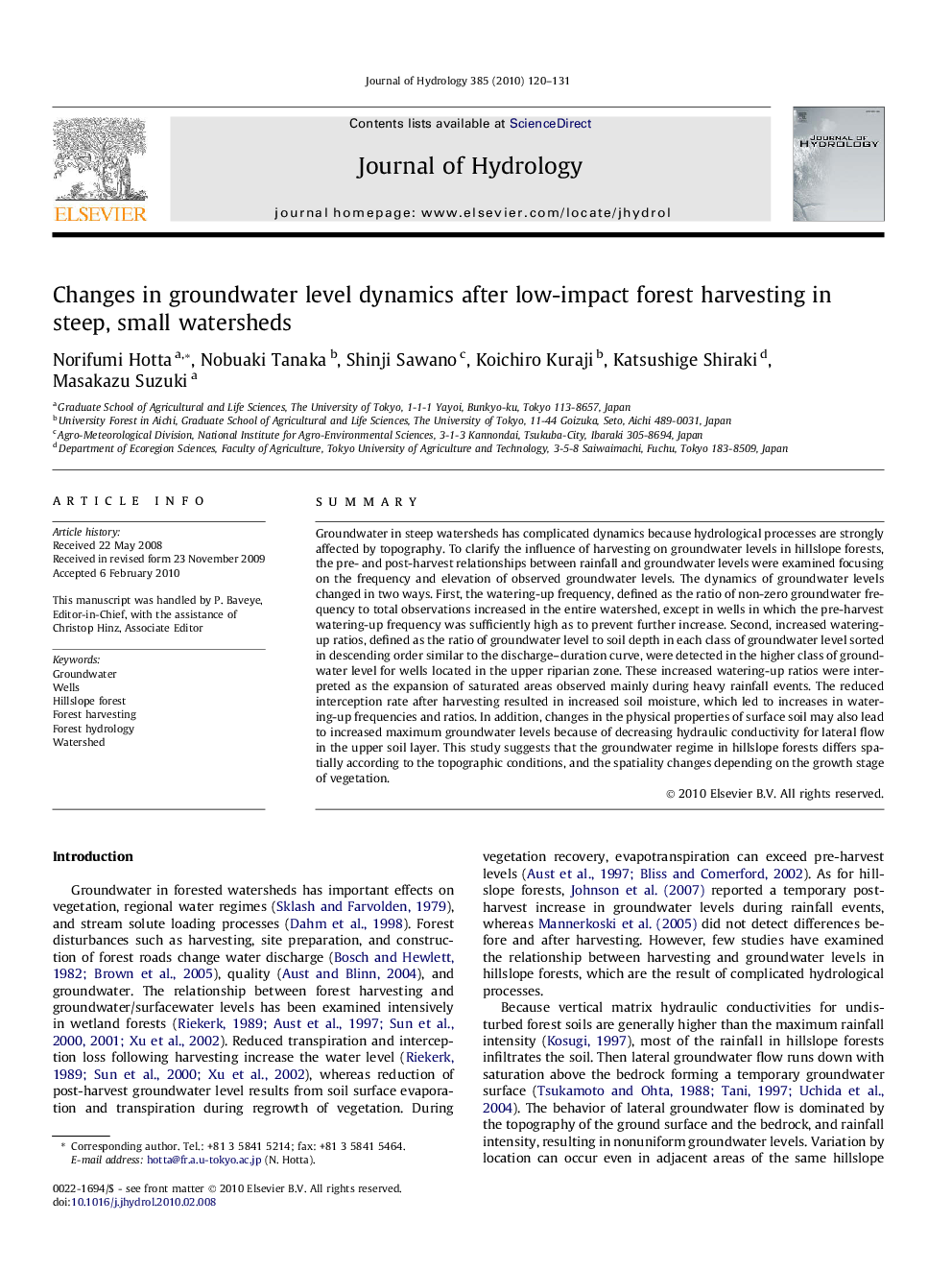| Article ID | Journal | Published Year | Pages | File Type |
|---|---|---|---|---|
| 4578419 | Journal of Hydrology | 2010 | 12 Pages |
SummaryGroundwater in steep watersheds has complicated dynamics because hydrological processes are strongly affected by topography. To clarify the influence of harvesting on groundwater levels in hillslope forests, the pre- and post-harvest relationships between rainfall and groundwater levels were examined focusing on the frequency and elevation of observed groundwater levels. The dynamics of groundwater levels changed in two ways. First, the watering-up frequency, defined as the ratio of non-zero groundwater frequency to total observations increased in the entire watershed, except in wells in which the pre-harvest watering-up frequency was sufficiently high as to prevent further increase. Second, increased watering-up ratios, defined as the ratio of groundwater level to soil depth in each class of groundwater level sorted in descending order similar to the discharge–duration curve, were detected in the higher class of groundwater level for wells located in the upper riparian zone. These increased watering-up ratios were interpreted as the expansion of saturated areas observed mainly during heavy rainfall events. The reduced interception rate after harvesting resulted in increased soil moisture, which led to increases in watering-up frequencies and ratios. In addition, changes in the physical properties of surface soil may also lead to increased maximum groundwater levels because of decreasing hydraulic conductivity for lateral flow in the upper soil layer. This study suggests that the groundwater regime in hillslope forests differs spatially according to the topographic conditions, and the spatiality changes depending on the growth stage of vegetation.
